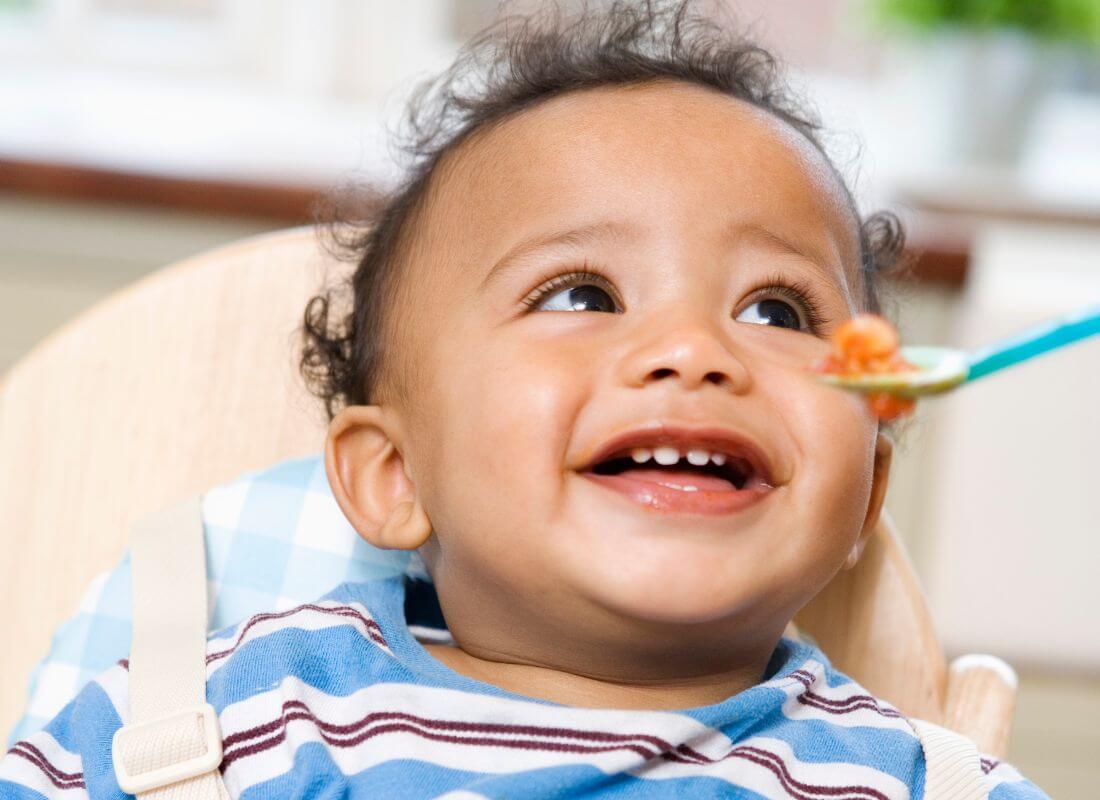Is my child ready to start weaning?

Weaning is an exciting developmental milestone for both you and your child. Your little one will begin to have a varied diet as they start to taste new food alongside their milk feeds. However, weaning can also be a new challenge for parents. With so much conflicting information online about when your little one will be ready to start weaning, it is important to know the facts from the fiction when preparing for this new adventure.
Is my child ready to start weaning?
Why should I wait until my child is 6 months old to start weaning?

The NHS recommends starting to introduce your child to solid foods at 6 months, however, your baby’s circumstances may be different so it’s best to consult with your doctor.
In general, waiting until your child is around 6 months old gives your little one time to learn how to better feed themselves. By this age, they will be better at moving food from the front of their tongue to the back. Before weaning, your child should also be able to stay in a sitting position. All of these things will help your child swallow their food safely.
In addition to this, the energy and nutrients provided in breast milk or formula are needed until your child is around 6 months of age.
What are the signs of weaning readiness?

According to the NHS website, these three signs will show that your little one is ready to try weaning safely:
- stay in a sitting position, holding their head steady
- coordinate their eyes, hands and mouth so they can look at their food, pick it up and put it in their mouth
- swallow food (rather than spit it back out)
However, it is important to note that the following signs can be mistaken for signs of weaning readiness. These signs are not necessarily signs of weaning readiness but are common baby behaviours:
- chewing fists
- wanting extra milk feeds
- waking up in the night (more than usual)
It is important to remember that this is generalised guidance for when your child may be ready to start weaning. If your baby was born prematurely, please speak to your healthcare professional for guidance on when to begin weaning. For some extra support, the NHS have a ‘Ready Or Not Weaning Quiz’ that can be completed on their website.
Be prepared for your little ones weaning journey: A weaning checklist

The key to a successful weaning journey is preparation. We have created a weaning checklist that will allow you to be best prepared for this next step. We recommend:
1. The Baby Brezza Food Maker Deluxe
Winning bronze in the Made For Mums Awards 2022, this easy-to-use food maker automatically steams and blends homemade baby food in as little as 10 minutes.
2. The Ziza Highchair and Tray
Children need to be able to sit upright to allow them to safely swallow their food. This highchair is super easy to clean after messy mealtimes and fits effortlessly into the home.
3. A bowl
Ideally with a suction base, a bowl can help to stop yummy food from ending up on the floor!
4. First cup
Using an open or free-flow cup can teach children how to sip water when weaning.
5. Spoons
If opting for spoon-led weaning, weaning spoons can help your little one transition from liquids to solids. Weaning spoons are usually made from rubber or plastic as these are softer on your child’s gums.
6. Ice cube tray
Ice cube trays can be useful when freezing small portions or batch cooking.
7. Bib
Save your little one’s clothing from stains by using bibs.
8. Messy mat
Mealtimes can get messy, especially if you are opting for baby-led weaning. Messy mats can help save your floors and carpets from stains.
Although this next step of your child’s development can leave many parents with questions, it is important to remember that every child and family has individual needs. If you have any questions surrounding your weaning journey or your child’s development, it is best to seek advice from your doctor.
How ever and whenever you decide to start this next milestone, make sure to have fun! Try and test some bold and exciting flavours. Who knows, Butternut Mac 'N' Cheese might be your little one's new favourite food!

